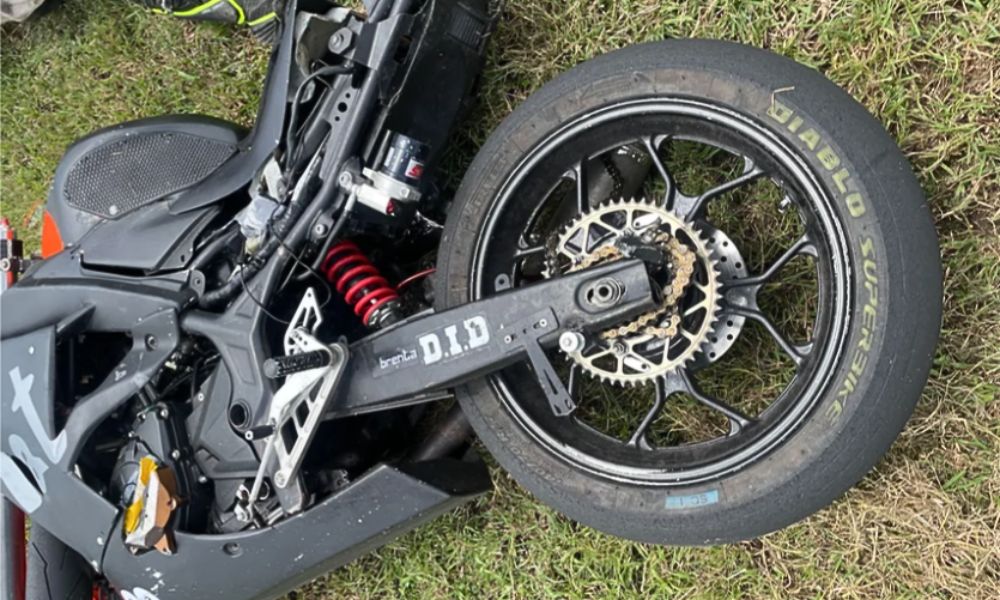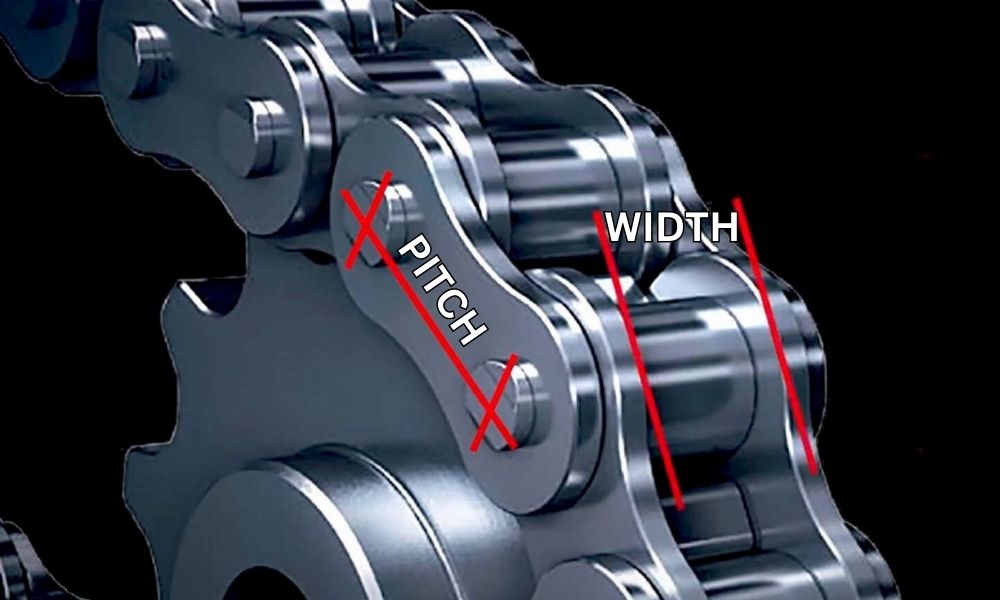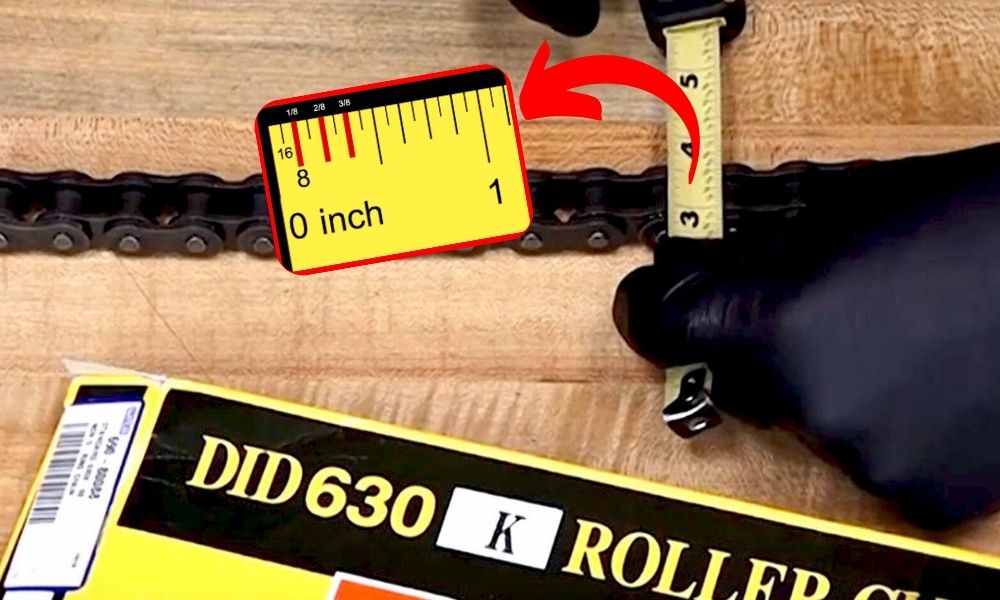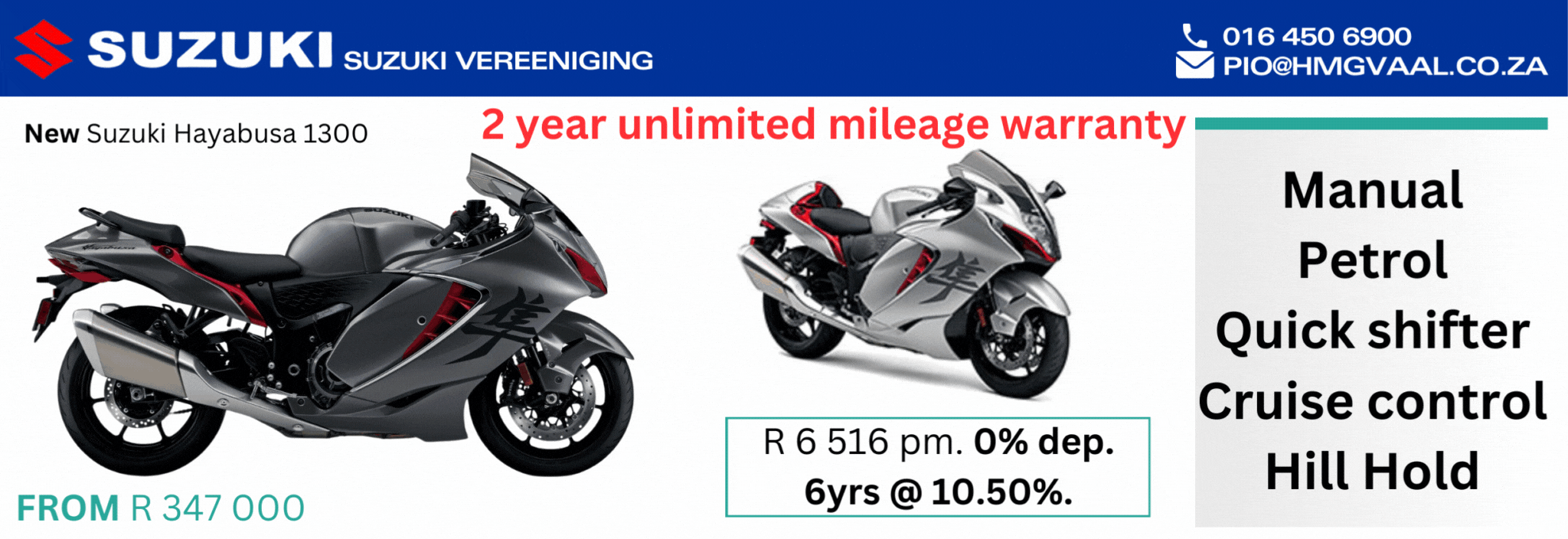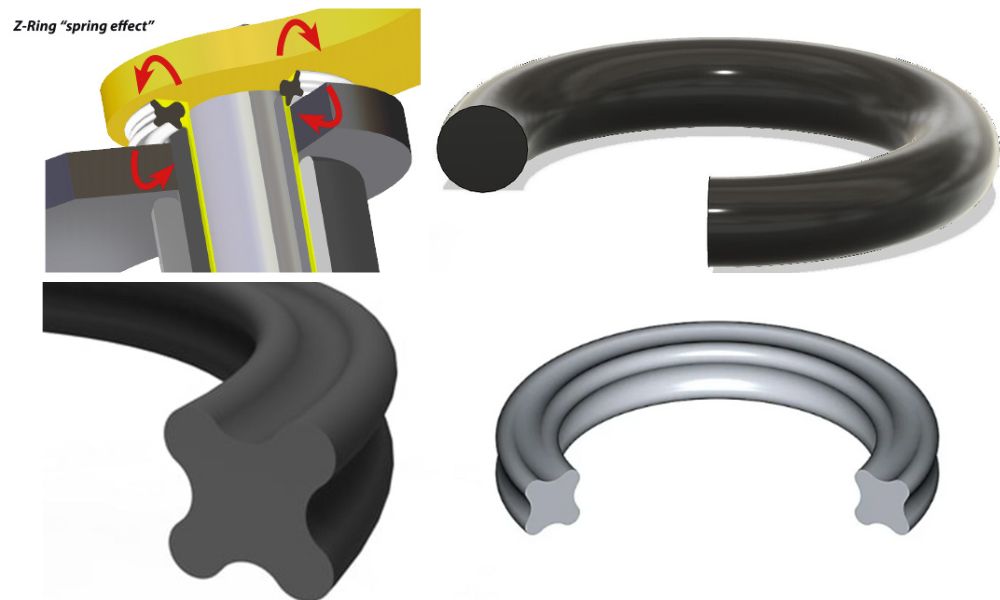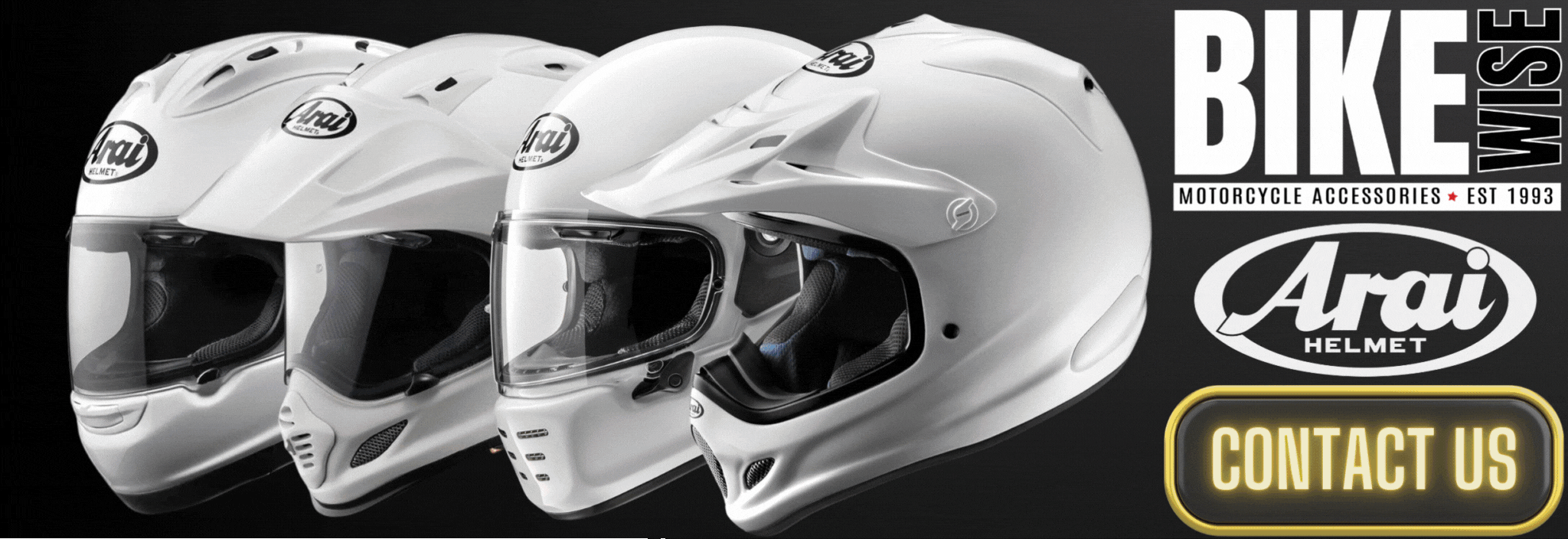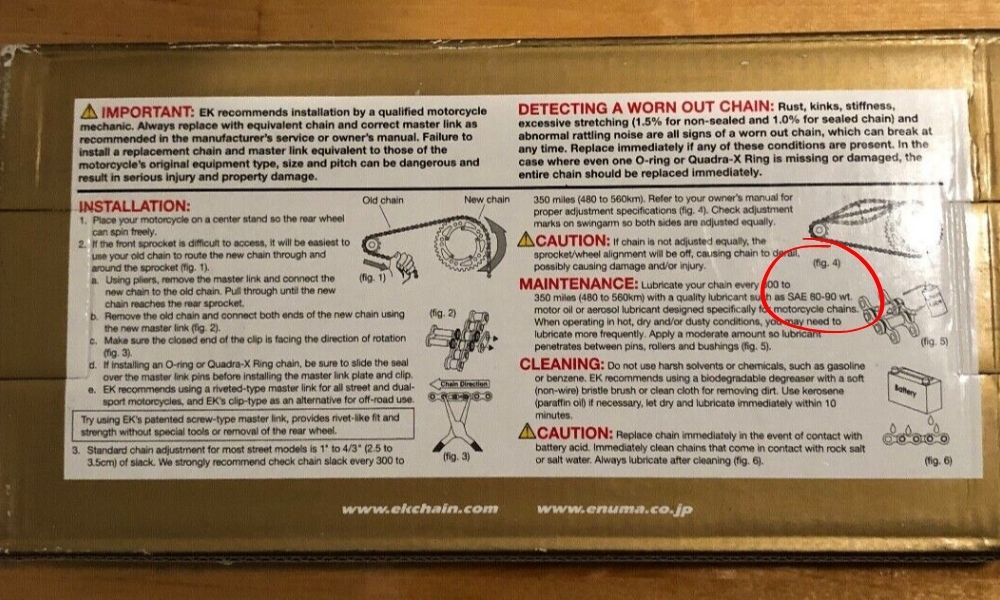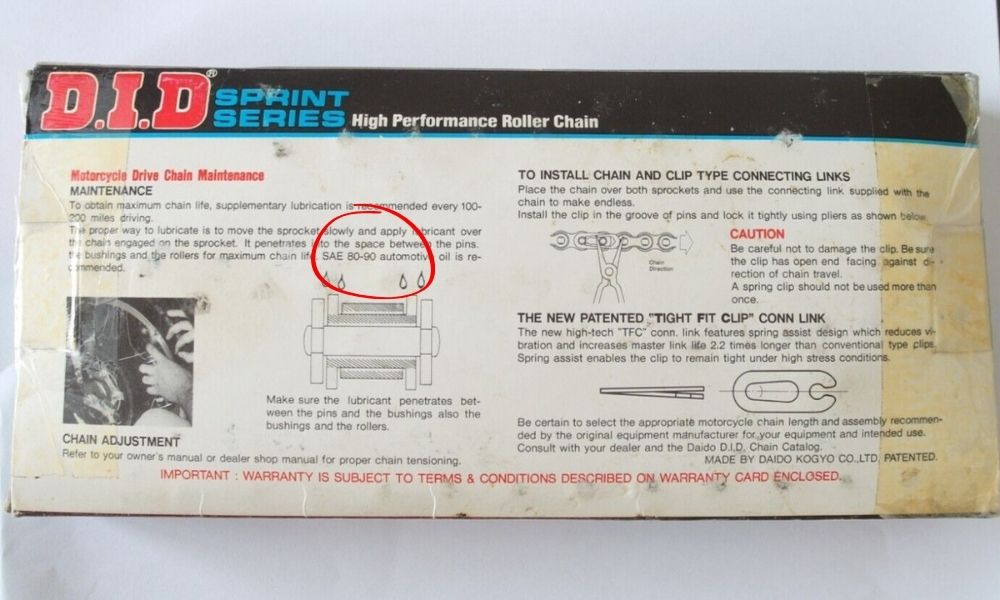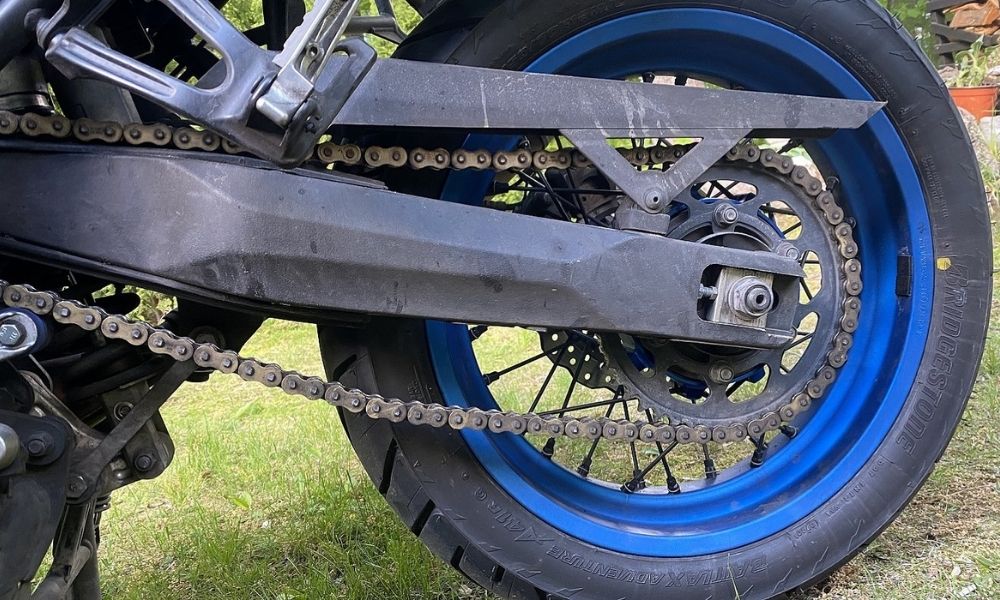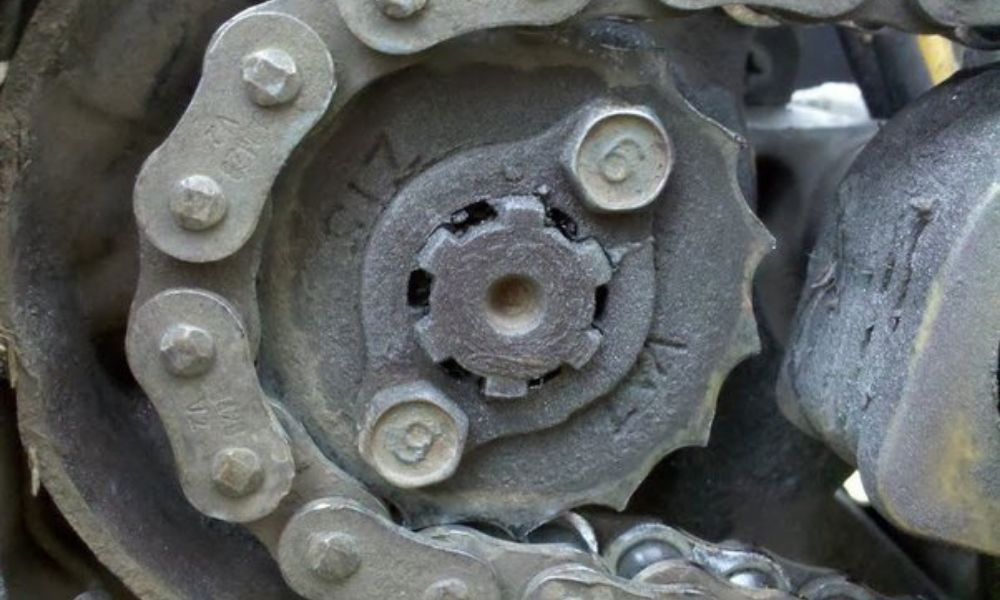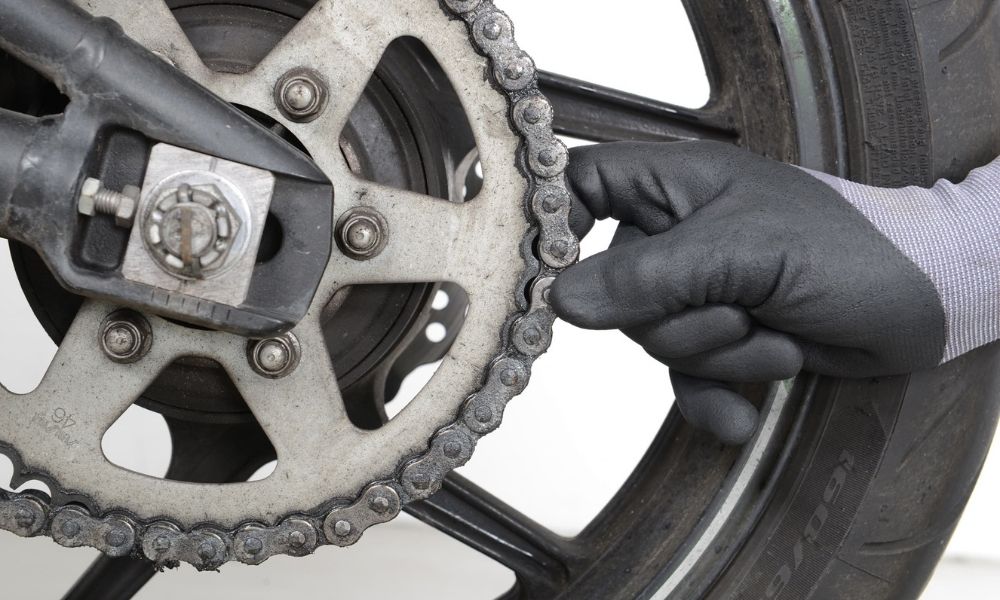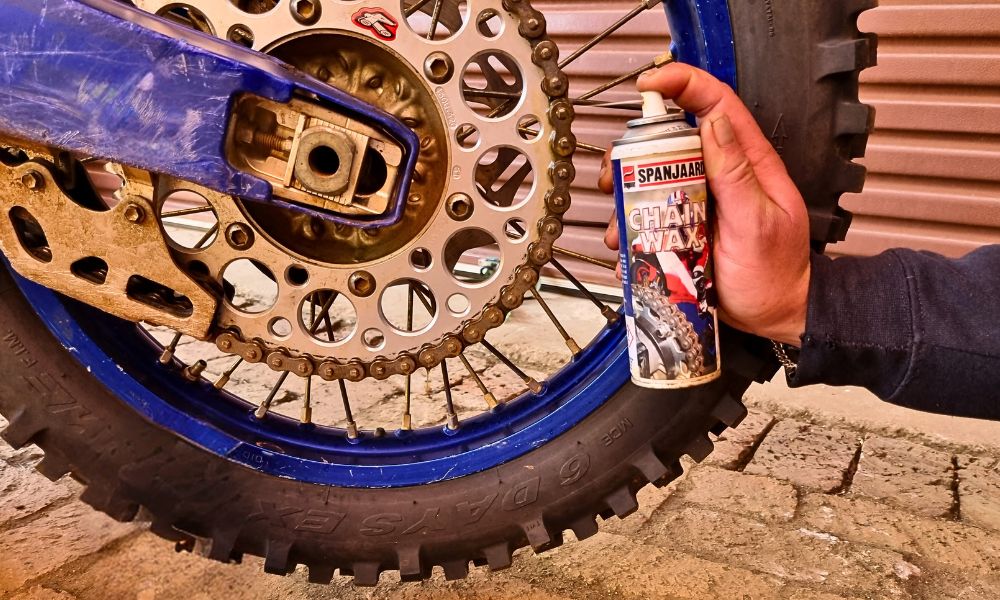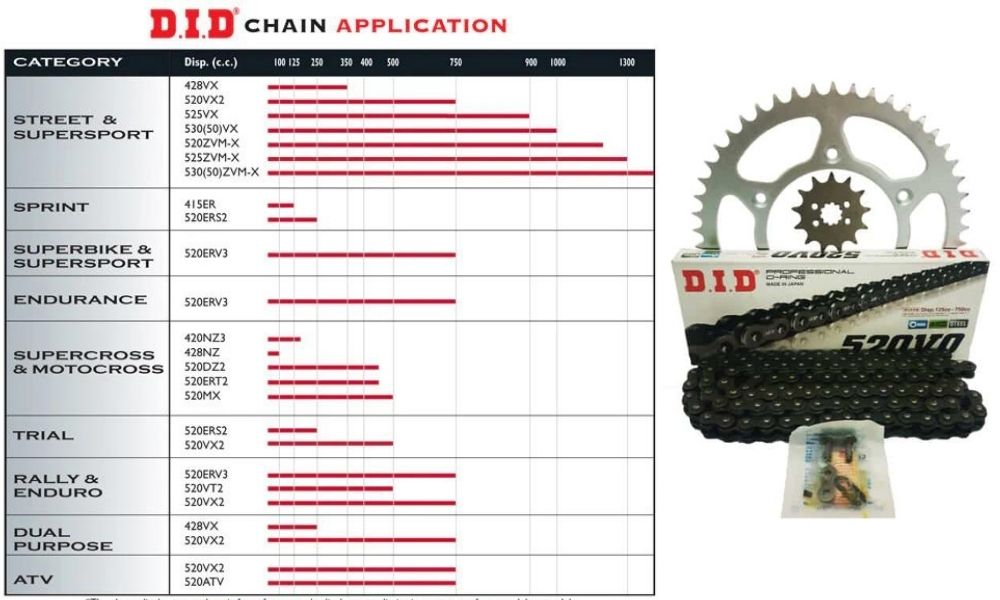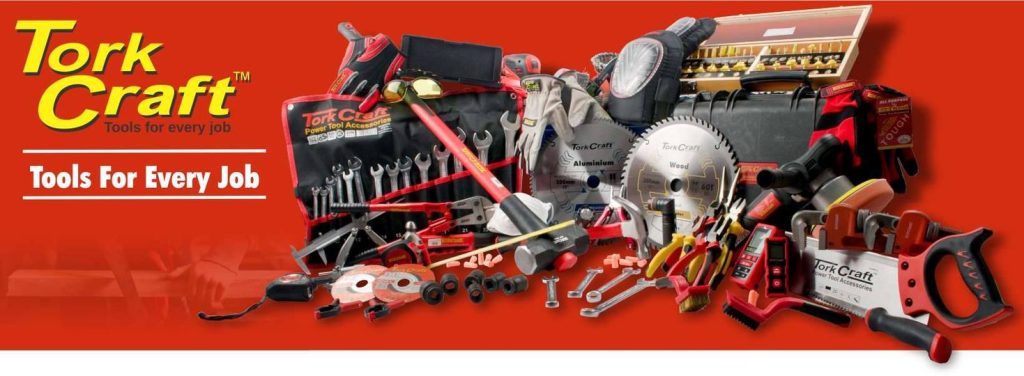Brought to you by: We Sell Parts.Co.Za
This is much more important than you might think, if you get this wrong it can very likely result in some pretty serious consequences to you and your motorcycle. Incorrect chain application and fitment will also void any and all warranties.
“Guys! Please do a feature and educate people” says Brandon. “We get people fitting the incorrect (Often cheaper) chain to their bike and when things go wrong, they cry…”
We had Séan Hendley investigate with Brandon Leppan of We Sell Parts and they pooled information from sites like Partzilla, Wikipedia and ThumperTalk and this is what they came back with.
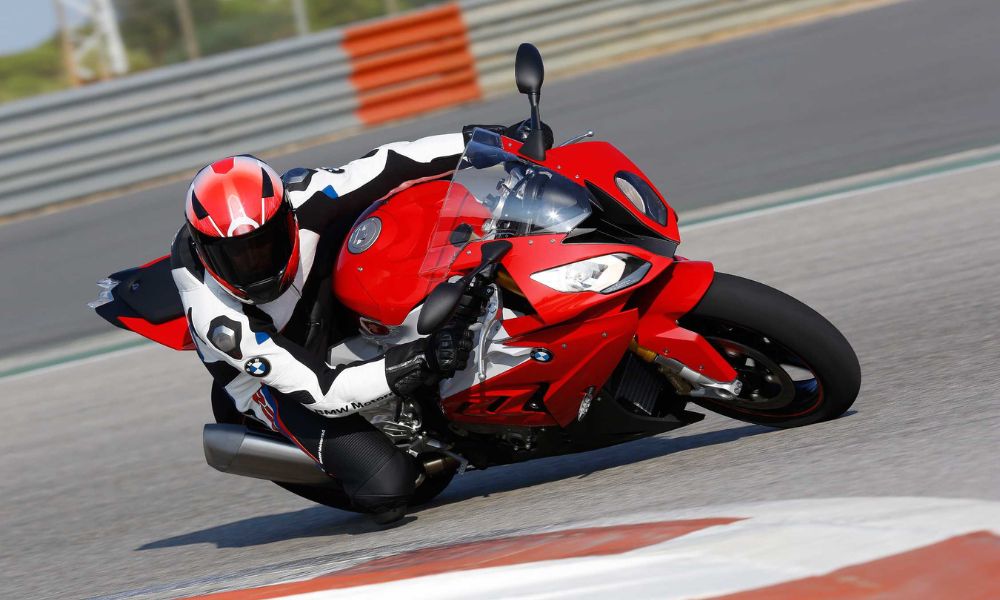
There is more to it than we guessed:
Especially, if you do step down conversions to get more power and speed. Yes, it does work and we are in the process of setting up an actual scientific test to verify that for ourselves. The common yardstick is that stepping down from a 530/525 pitch chain and sprockets to a 520 pitch will gain you around 1.5bhp and doing this reduces unsprung weight. So it’s basically free horsepower when your chain and sprockets need to be changed anyway.
However, and this is where you have to be very careful:
READ THIS.
Just like load indexes and speed ratings on tyres, chains have horsepower and torque ratings – and failing to adhere to those can result in your chain failing:
Best case scenario, the chain snaps and whips out without causing any damage. However – and the more likely scenario is that it wraps itself around either the front or rear sprocket. Around the back sprocket inevitably ends up in an uncontrollable skid, always damaging the rear tyre at very least or causing a helluva high side if you’re cranked over through a fast corner. We have heard of cases where the chain has flung upwards and broken the rider’s ribs, and I, (Séan Hendley), have been pelted in the visor by bits of chain and engine casing as the chain let go on my wife’s DR 750 as I was riding behind her.
The bikes casings were mangled and had to be replaced and/or repaired/welded at great cost. I also know of a case where a 520 conversion was done with a lower rated chain on a S1000RR to save money, (an almost 40% saving).
Guess what? The chain failed, ripped through the bike’s engine causing around R80k damage to the engine and bike. A warranty claim was lodged with the Importer/Distributor who sent it overseas to the manufacturer who repudiated the claim, with two simple words, “Incorrect Application”, you can work out the rest for yourself
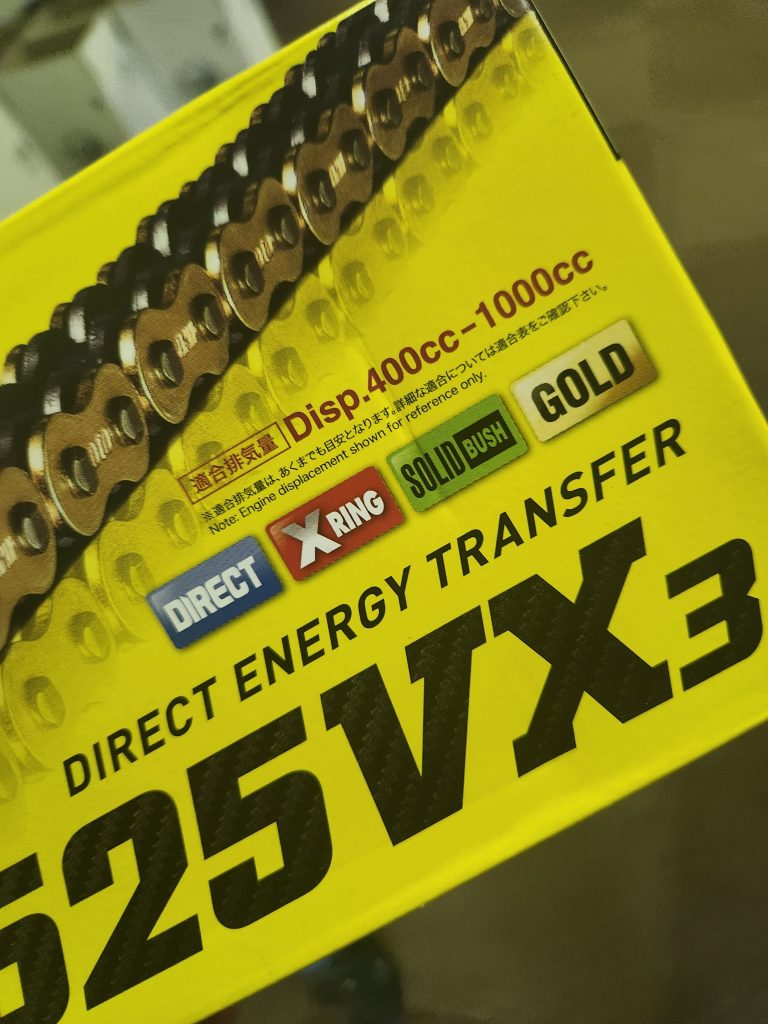
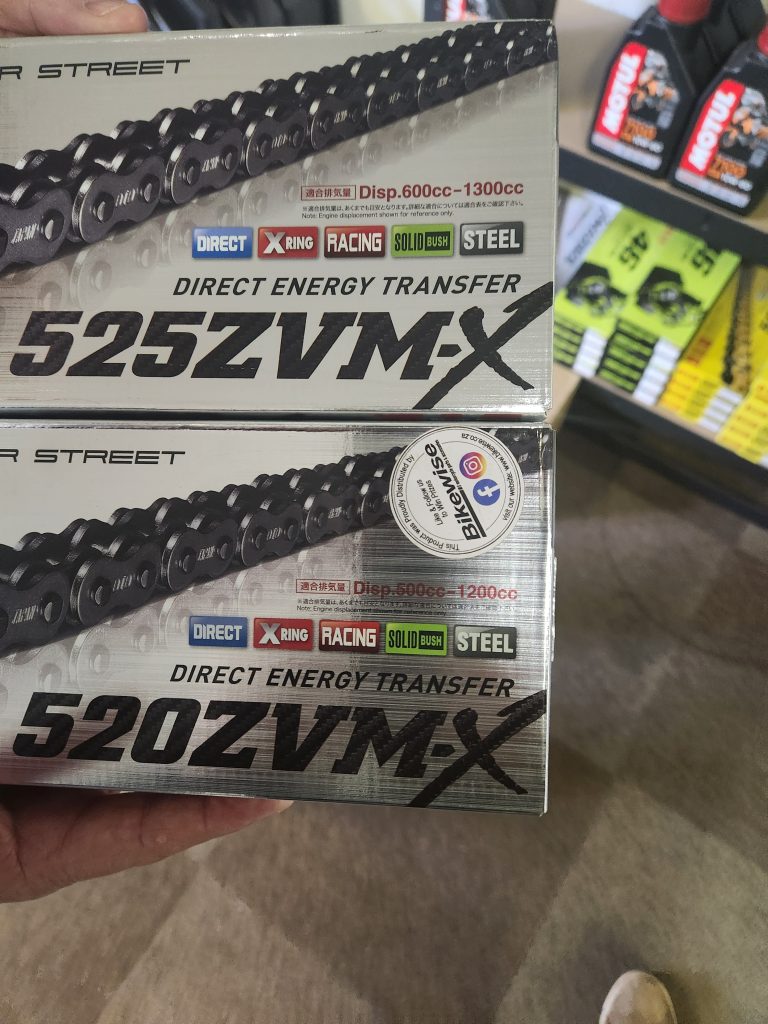
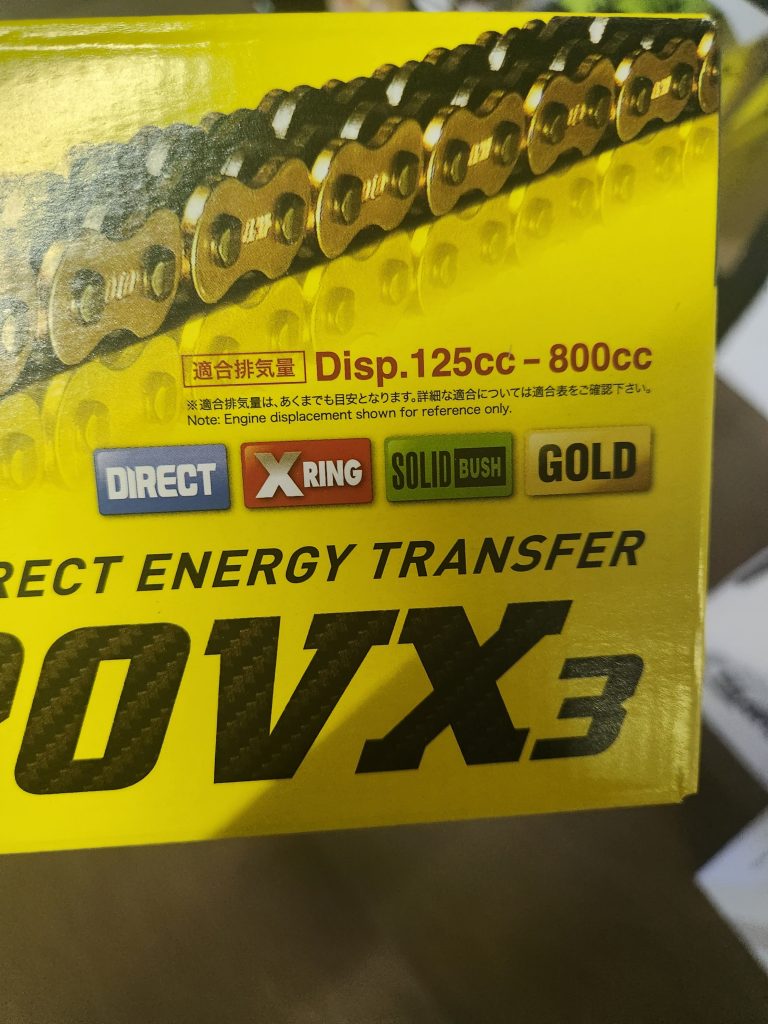
Buying a new chain? Unsure of whats right for your bike? Some manufacturers give guidance on the packaging.
The Technical Stuff:
We chatted to Brandon Leppan from We Sell Parts in Edenvale, not only does he run a professional outfit in Edenvale selling and fitting all the top brands of motorcycle products to his customers as well as his own machines, but he used to race back in the day and currently sponsors a few select racers. His knowledge and experience is immense in almost everything motorcycling and he educates himself and his team to make sure he gives his customers solid advice.
Off the bat, how do you determine what chain is fitted to your bike?
“Generally, the size is stamped on the outside link plate on the chain, however if it is not, you can determine the pitch and width with a couple of simple measurements.”
What is pitch and width?
“Pitch refers to the distance between the centrelines of the two pins and rollers that form a link. Width is the distance between the inside faces of the two inner plates that form a link, so the narrower plates inner distance.”
These measurements are the 3-digit number such as 420, 525 or 630 stamped onto the outside of the outside plate. The first digit refers to the pitch and the last two digits refer to the width, all measured in the imperial scale of inches, (at least they stick to one specific unit, not like tyres that are mm’s, percentages and inches).
So how do the measurements work?
“Chains have a pitch number of either 4, 5 or 6. If the distance between the centrelines of the two pins in a link is four eighths of an inch, the chain has a pitch number of 4, so that will be a 415, 420 or 428 chain as found on most smaller cc dirt bikes. A measurement of five eighths of inch will be a 5 pitch, i.e.: 520, 525 and 530 as found more commonly on most bigger capacity dirt bikes, adventure bikes, road bikes and quads. A chain measuring six eighths of an inch will be a 6 pitch or 630 chain, used on older bikes and high horsepower bikes.”
Generally these days DID’s, ZVMX2 chains, (similar from other manufacturers), are a suitable and more readily available replacement for the old 630’s and most sprocket manufacturers should have the correct sprocket or blank that you can have drilled to match. To measure the pitch, put a ruler, tape measure or digital calliper beside the chain and measure between the pins in a single link.
SO!! You made it this far without your head exploding….
You’re doing better than us, we had to have a little lie down. Now that the easy stuff is done, let’s get onto the really difficult technical data…. “Gooie Genade Gerhardus!!”
What are the differences between STD, O-ring, X-ring and Z-rings?
“A Standard or non-sealed chain does not have any rubber seals, (O/X/Z) and will require more frequent maintenance or run the risk of having to change them much more frequently. Generally speaking, these are your cheapest chains in any manufacturer’s range. they offer less rolling resistance and are frequerntly used on MX bikes. But they have to be adjusted and replaced frequently.”
“Sealed chains, (O/X/Z) are those chains that are greased during the assembly process and then made waterproof through the adoption of polymer gaskets or sealing rings interposed between the internal and external links. The type of ring used is named for the letter of the alphabet it most represents when cut in a cross section. An O-ring is possibly the oldest type of seal and looks like an ‘O’ or circle. Z-rings will have a ‘Z’ construction and congruently an X-ring will have an ‘X’ construction.”
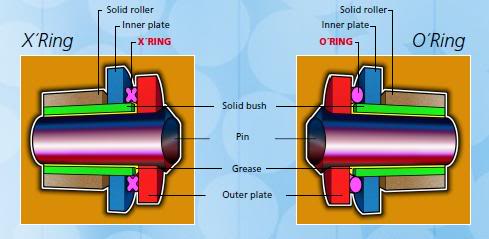
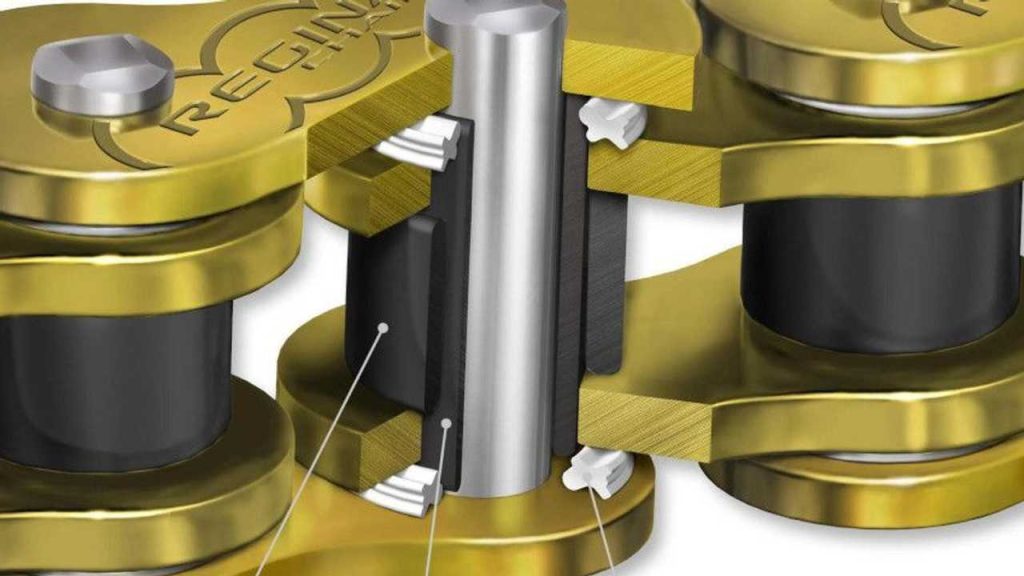
O vs X vs Z-ring seals?
The O-ring seals are designed to keep the lubricant in and contaminants, (dirt etc), out. However, they do wear out, deform and become less effective over time and create a bit of drag on the chain, which is more noticeable on smaller capacity bikes. The X-ring chain is developed from the O-ring chain and, like the O-ring chain it has sealing rings which keep the contaminant (dirt) out, and lubricant in between the pins and bushings. However, unlike the O-ring chain, it has an X-shaped seal which does not deform as much or create as much drag when under pressure. Due to their unique shape, they have two additional sealing surfaces to a traditional O-ring, which means they are better at keeping the lubricant in and the dirt out, thereby increasing the serviceable life of your chain. An X-ring will result in a slightly more flexible joint with lower friction between links, therefore fractionally less energy lost during chain movement, due to having two smaller contact patches rather than one larger one as in an O-ring. A ‘Z ring’ is an X-ring with an asymmetric profile, with different designs intended to prevent twisting or sliding, or to fit some specific purpose e.g., seat inside a retention groove.
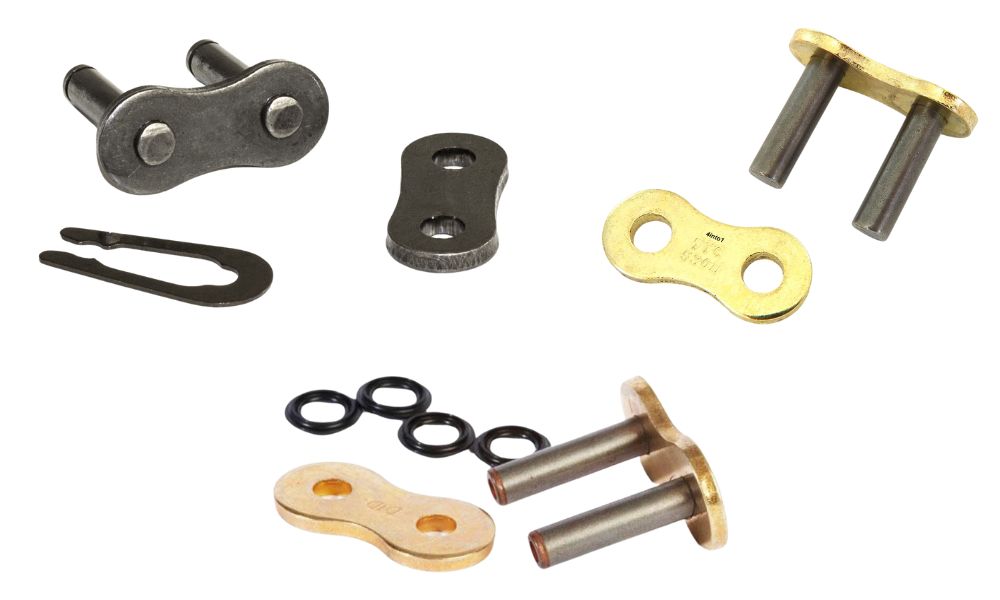
Rivet vs Clip links
This is another contentious topic, mostly with bigger capacity road going bikes, adventure bikes and superbikes. One school of thought dictates that you should never use a clip link on any road bike over 500cc, the contending school of thought argues that they have been using clip links on their big bikes since granny was a pin up.
Clip links are nowhere as strong as a rivet link on high powered motorcycles. Strictly speaking, clip links are only made for dirt bikes and smaller capacity commuter/commercial road bikes. Anything else should have a riveted link.
Most new chains come with a clip and rivet link in the box. Pop the clip link into your bikes tool kit for in the very unlikely event that your riveted chain does come adrift and you need to join it to get home. Consider it along the same lines as your puncture repair kit.
Chain maintenance and replacement
I really enjoy researching and writing these articles because I always learn some quite profound bits of information. Earlier on in this article it was all about the chain sizing and right now it is that some chain manufacturers recommend automotive gearbox oil SAE 80-90 or 75w90 as the best lubricant for their chains on their boxes…. (all our chain lube and wax advertisers have just passed out), but go look on the back of the box for yourself or refer to the attached images.
Maintenance:
The same pics will also tell you that you need to maintain your chain every 500 kms or so. That is checking that your chain slack when unloaded is not more than 2.5 to 3.5cm and it is properly lubricated. On off-road machines you must clean and lubricate your chain after every ride, on road bikes a minimum of every 1,000kms or 300 to 400 km if riding in dusty conditions. Grease and dirt turn into grinding paste very quickly which works its way in-between your links, roller and pins and just chews everything up very quickly, especially on adventure bikes.
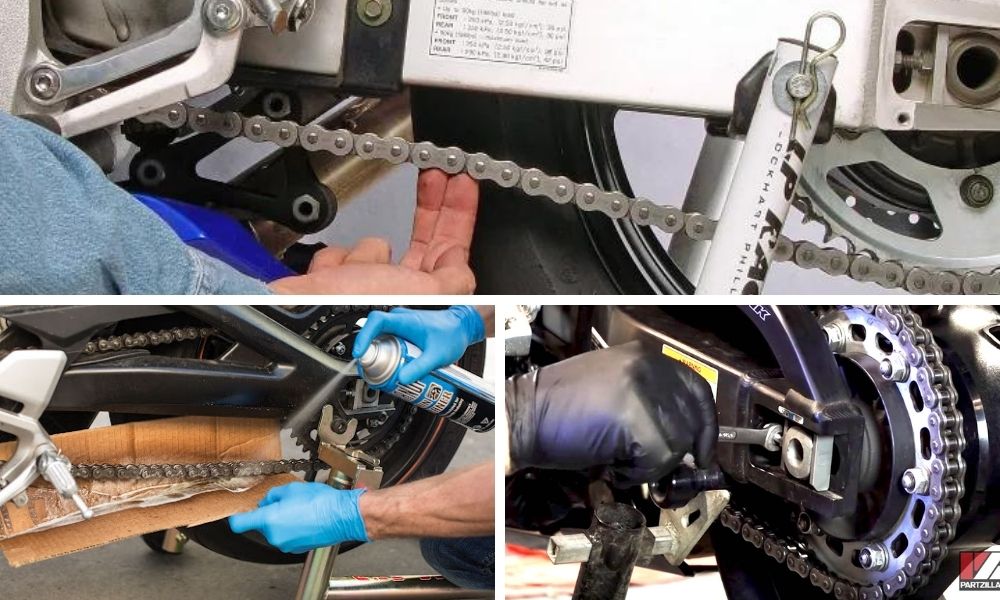
Replacement:
How often should you replace your chain?
“Well, that is up to you really. It all comes down to your riding style and habits, how well you look after your chain, do or don’t maintain it properly. On your swingarm, as well as on your chain adjuster you have corresponding markings to align your rear wheel when tensioning your chain, once you reach the end of those markings and still have more than 3.5cm slack in your chain it is definitely time to replace. Other indicators are, excessive rust, kinks, stiffness, abnormal rattling noises and sideways movement are all signs of a worn-out chain and it needs to be replaced immediately or risk it failing. You can buy the best chain, but if you use it in the incorrect application, do not maintain it or abuse it regularly it won’t last very long. Look after it on the other hand and it will last you a really long-time.”
ALWAYS, always replace both front and rear sprockets at the same time you replace your chain. Putting a brand-new chain on old sprockets is a guaranteed way to shorten the life of your chain by at least 90%. (We will delve into the ins and outs of chains in another article, this is already a lot to take in).
Correct fitment and applications:
Read This!
This is where you DO NOT bugger around, especially on bigger capacity, high powered machines. Plate thicknesses, tensile strengths, (measured in average kilo Newtons), pin and roller diameters and wear resistance indexes all factor in. The manufacturers spend tons of money and spend millions of hours with exceptionally intelligent people in white coats doing research and development. They draw market feedback over many decades, so they can supply the very best product possible for your application. Shun all of that, listen to that clever mate of yours at the pub and usually you will pay the price…
At the end of the day, you need to weigh up the purchase cost against the cost of ownership per kilometre. Cheaper isn’t always cheaper. A chain might be more expensive on the initial purchase, but it will give you better mileage.
This is a basic guide based on brands like D.I.D, JT, EK and Regina which are all available from We Sell Parts:
D.I.D 520 525 530
VO 750cc 900cc 1 000 cc
VX3 800cc 1 000 cc 1 100cc
ZVMX2 1 200cc 1 300cc 1 400cc
JT
Z3 1 000 cc 1 400cc 1 400cc
EK
ZVX3 1 200cc 1 300cc 1 400cc
Here is some interesting information from the D.I.D. catalogue.
They claim that their VX series chains have a significantly longer chain life than their VO series, they don’t quote figures, but it is newer technology, so it makes sense.
Their VX3 range has an even longer chain life still, and here they quote figures, up to 32% longer life in the 520 pitch with the 525 and 530 VX3’s giving as much as 41% longer wear life.
Go check out their full catalogue here, there is a lot of really great information that will help you make the correct choice of chain for your application.



